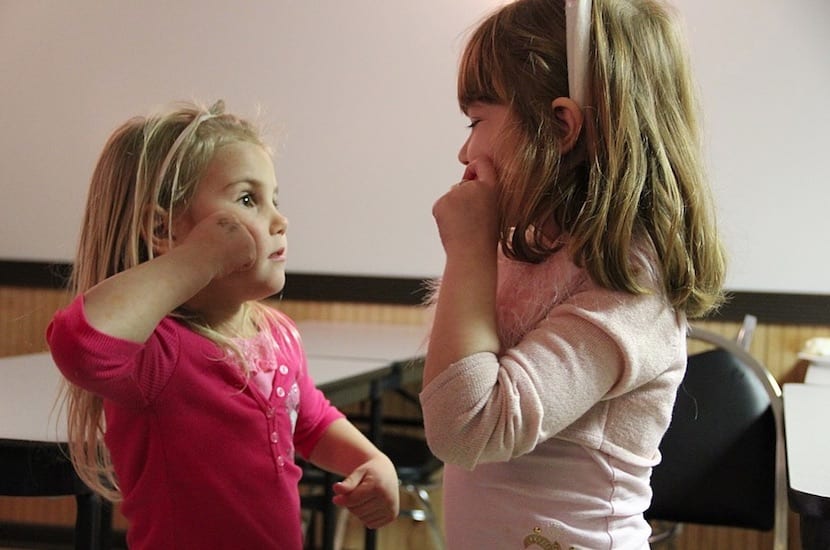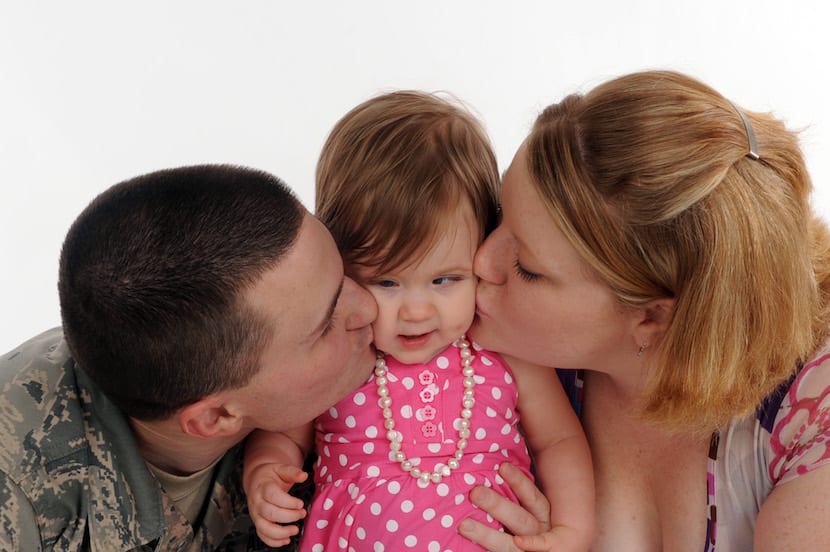
As you know, today we celebrate the International Day of Deafblind people. Y es esta (la sordoceguera) una realidad que la mayoría desconocemos, por lo que hemos creído justo visibilizarla en Madres Hoy. Esta discapacidad dificulta enormemente la comunicación y “obliga” a utilizar el contacto físico como fuente de información; imagine, neither sight nor hearing ... difficult to put yourself in the place, and at the same time easy with a little empathy and sensitivity.
It is possible to speak of several types of deafblindness, depending on the moment in which the disability appears; they are what determine the acquisition (or not) of oral language and its maintenance. On the other hand, there are also degrees. All the different characteristics that may derive from the aforementioned typologies, condition the communication system that we could choose to facilitate communication with people who suffer from deafblindness. The most frequent are: alphabetic, non-alphabetic, writing codes, or others; In addition to this, I understand that in a society in which knowledge and technicalities prevail, we must also bet on an approach that, from love, facilitates communication to those who barely have channels to develop it.
Before continuing with the objective of this post, which is to provide resources for communication with deafblind children, I believe that we must be aware of the consequences of this form of functional diversity. For example, they may be affected by emotions of greater intensity than those perceived or felt by children without auditory or visual impairments. And it is not only about emotions, since the lack of these senses implies communicative dependence and less autonomy.
Development of children with deafblindness

Already in the development from birth, certain disadvantages of babies with deafblindness can be observed, compared to others. For example, the affective bond with the mother through physical contact (skin to skin) should not entail any major difficulty; but the early loss (or being born without) of sight or hearing will mean that the little one will not be able to clearly interpret what their parents want to communicate to them, and you may also become frustrated at the lack of response to your attempts to communicate. It is not the same when the problem occurs at some point after having learned to speak.
And after a childhood not without difficulties (surely also full of love and exciting experiences), with schooling processes and special needs involved ... adolescence arrives. A stage of great changes that is linked to the de-idealization of parents and identification with their peers. But just when the group is needed most, they may be rejected, have difficulty relating to the group, or associated emotional problems arise, such as poor self-esteem. So ... we can also talk about educating in respect and acceptance of difference; and in evaluating everything that someone with other abilities can contribute.
Difficult communication ... but possible

As you know, interpersonal communication is carried out mainly through oral language (emission-reception and interpretation); although it is a process of information exchange that can be done in many ways. But to be realistic, we will conclude on the importance of the auditory and visual canal, and when the deterioration is of both, the difficulties multiply. I recall here the importance of touch.
Since the child is very young, we can base our communication with him on three fundamental pillars: routines, anticipating warnings, opportunity to control the environment. Clearly from these pillars differentiated strategies will be derived according to whether they maintain auditory or visual residues.
Communication with deafblind children: the family

Patience with other people should be infinite, but very especially with those who have deafblindness, and if they are children we must find ways of not being overwhelmed. What's more:
- Along with patience, we will learn to communicate by offering many pauses in the process, in order to ensure that we understand and are understood.
- Establish routines: even if they do not hear or see us (or do so little) we can get them used to starting and ending activities with differentiated and repetitive tactile signals. For example, place the baby on a blanket on the floor and indicate the existence of the toy with a caress, before bringing their hands over the object.
- Touch, touch, touch ... do not be afraid to caress, touch, hold, let him know you by your features (a brother's hand, mother's mouth, father's hair, grandfather's wrinkles).
- Adapt the environment to be safe and trustworthy.
- A child with deafblindness can also choose, and you should encourage decision-making. For example with toys, with clothes, you can let him recognize with his hands, explore and make up his mind, respecting his decision.
- Attention to the warnings: discomfort, discomfort, the need to change activities, or stop to eat. Each one expresses it in a way.
- Invent! As word games are invented with full-fledged children, games of discovery by touch can be invented that make the lives of these children more pleasant.
- Learn from mistakes.
- Stimulate visual and auditory waste by using objects with different colors and shapes, changing toys a lot, getting used to different sounds, etc.
- Enjoy
Communication with deafblind children: school
Here is a video in which school mediators (necessary for the schooling of students with deafblindness) tell their experience. You will like it.
Images - daveynin, Senior Airman Joanna M. Kresge